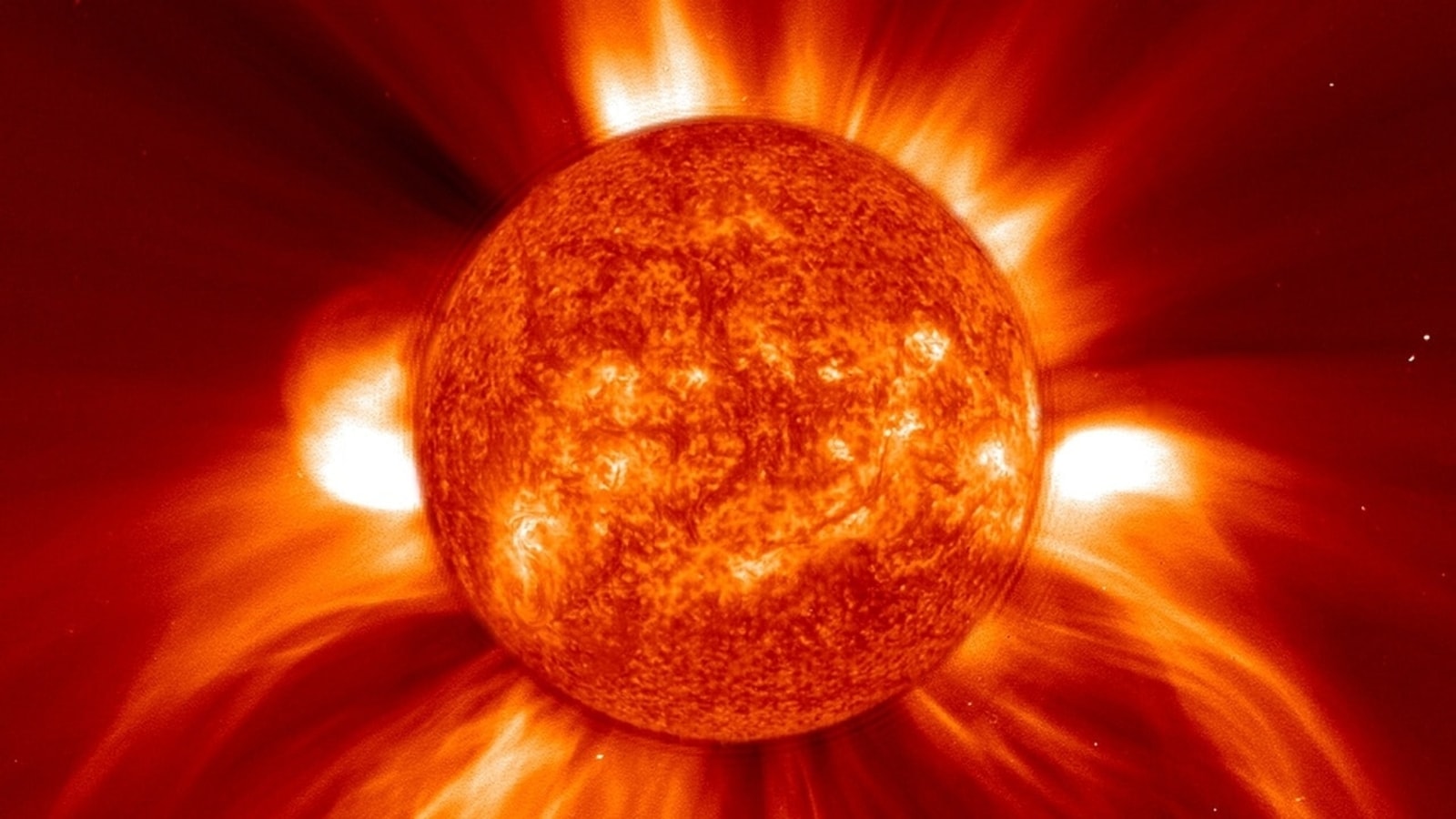CME attack threatens Earth with DANGEROUS solar storm, shows NASA SOHO; 1-2 punch likely
Two Earth-directed CMEs have been detected by NASA’s Solar and Heliospheric Observatory. They are expected to hit the Earth on July 7 and can spark a powerful solar storm. Check details.






 View all Images
View all ImagesAfter an amazing sunspot-filled June, July appears set to continue the trend of extreme solar volatility. We have already seen a radio blackout this month after a solar flare erupted on the notorious sunspot AR3554. Now, two separate coronal mass ejections (CME) have been released from the Sun and they are both partly Earth-directed, as per data from NASA's Solar and Heliospheric Observatory. This means that both will graze the Earth and spark solar storm events. And to make matters worse, it is expected that the second CME will catch up to the first, delivering two successive CME hits and amplifying the overall intensity of the solar storm.
Dr. Tamitha Skov, a space weather physicist, said in a tweet, “Our #Sun celebrates #July4 with its own special fireworks! We have two partly Earth-directed #solarstorms (aka CMEs) on their way. The second storm will catch up to the first giving us a 1,2-punch. Model predictions show impact likely July 7. I'll post NASA model runs next”.
Solar storm to strike the Earth on July 7
While partial CME strikes have not been known to cause powerful solar storms, this particular incident is concerning because of the two back-to-back CME impacts. The end effect is going to be amplified and as a result, the eventual storm can be terrifyingly intense.
It cannot be said at the moment whether it can produce a G5-class geomagnetic storm, but the intensity of the storm can be strong enough to damage small satellites, disrupt wireless communications such as GPS, low-frequency radio waves, and mobile networks, and even fluctuate power grids that can further damage any electronic devices that need to be attached to a power source.
Further, in the worst-case scenario, such storms can also damage internet connectivity as well as sensitive ground-based electronics such as pacemakers.
The tech that enables NASA SOHO
NASA's SOHO (Solar and Heliospheric Observatory) is a satellite that was launched on December 2, 1995. It is a joint project between NASA and the European Space Agency (ESA) to study the sun, its atmosphere, and its effects on the solar system. Equipped with 12 scientific instruments, such as Extreme Ultraviolet Imaging Telescope (EIT), Michelson Doppler Imager (MDI), LASCO (Large Angle and Spectrometric Coronagraph) and others, SOHO captures images of the sun's corona, measures the velocity and magnetic fields of the sun's surface, and observes the faint corona around the sun.
NASA tracks solar storm events to ensure there is a forewarning given to everyone concerned about the likely area of impact and its severity.
Catch all the Latest Tech News, Mobile News, Laptop News, Gaming news, Wearables News , How To News, also keep up with us on Whatsapp channel,Twitter, Facebook, Google News, and Instagram. For our latest videos, subscribe to our YouTube channel.





























